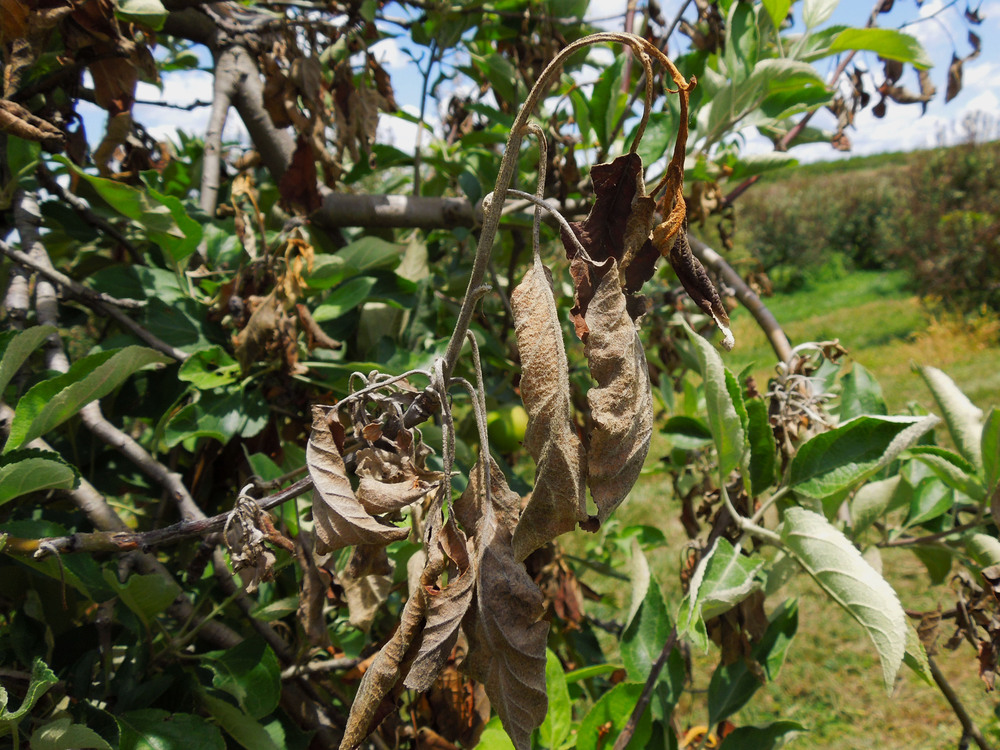Managing fire blight in apples and pears at home

JACKSONVILLE, Ill. — Apples and pears are popular trees to grow for people interested in growing their own fruit. However, they aren’t without any problems. A variety of insect pests and diseases can plague them. One common and potentially serious disease is fire blight.
What is fire blight?
Fire blight is a bacterial disease caused by Erwinia amylovora. While it is most commonly noticed when infecting apples and pears, it will also infect over 130 species in the rose family (Rosaceae). Other plants that can be affected include Callery pear, cotoneaster, crabapple, hawthorn, mountain ash, flowering plum, quince, serviceberry and spirea.
Infected plants may develop blossom blight, fruit blight, shoot blight and cankers. Infected twigs and branches will turn chocolate brown to black in color and appear as if they have been scorched by fire. The twig or branch’s tip will often curl back, forming a distinctive shepherd’s crook. While fire blight usually does not kill apple and pear trees, it will cause them to become unsightly and reduce the amount of fruit the trees produce.
How does fire blight infect plants?
The bacteria will overwinter along the margins of cankers in infected plants. When conditions in the spring become warm (around 65°F) and wet, the bacteria will begin to multiply and ooze out of the cankers. Insects, usually flies and bees, spread the bacteria to other areas of the plant, or other plants, particularly the flowers. The bacteria may also be spread by splashing rain and wind.
How can I manage fire blight?
The best way to manage fire blight is to plant resistant cultivars. Apple cultivars such as Gold Rush, Empire, Enterprise, Liberty, and Winecrisp have some resistance to fire blight. Pear varieties that have some resistance include Magness, Maxine, Moonglow, and Summercrisp. While they are not completely immune to fire blight, resistant varieties are less impacted by the disease than other varieties.
Infected stems and branches should be pruned out of the tree. This is best done while the plants are dormant to avoid spreading the bacteria to healthy parts of the plant (or other plants). Infected branches should be pruned at least 6 to 8 inches below cankers and infected areas.
If you feel you need to prune during the growing season, make sure to do it when conditions are dry to reduce the chance of spread. Prune 6 to 12 inches below visible symptoms, and make sure to sanitize pruners between each cut.
Avoid overfertilizing trees and excessively pruning apple and pear trees during the growing season. These can lead to flushes of new growth, which is highly susceptible to fire blight.
Pesticides can also be used to help manage fire blight. Copper compounds can be sprayed during the dormant season and at green tip, and antibiotics can be used during bloom to protect flowers. As with all pesticides, make sure to follow all label directions.
Good Growing Tip of the Week: Under ideal conditions, the bacteria that causes fire blight can rapidly increase. Under humid conditions at 70°F, the bacteria can double every 20 minutes, meaning one cell can become one billion cells overnight.
The tips of twigs and branches infected with fire blight will often curl, forming a characteristic shepherd’s crook.
Miss Clipping Out Stories to Save for Later?
Click the Purchase Story button below to order a print of this story. We will print it for you on matte photo paper to keep forever.

